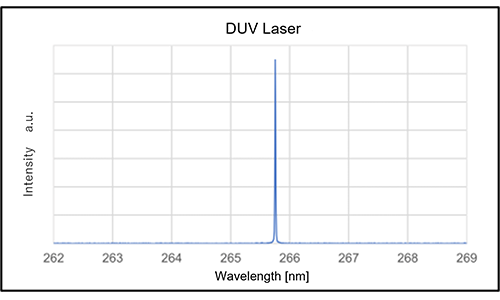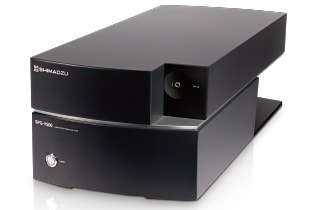Customer’s situation
In the development of solid state lasers (FHG, 266 nm) via 4th harmonic generation, our customers look for an instrument that can measure wavelengths from the deep ultraviolet to the near-infrared at high resolution, in order to assess the correlation between the fundamental wave (1064 nm) and second harmonic generation (SHG, 532 nm).
Advantages of Shimadzu products
★Advantage1: Wide Wavelength Measurement Range from 185 to 1095 nm
It can be accommodated a wavelength range of 185 to 1095 nm by SPG-V500 only.
The wavelength resolution (FWHM) is approximately 0.02 nm (Typ.)*1.
*1: Even higher wavelength resolution measurements can be obtained by utilizing higher order light.

★Advantage2: Easily Obtains the Spectra of Invisible Light
Thanks to dia. 600 µm multimode fiber incidence and spatial incidence, the SPG-V500 provides high-resolution, high-sensitivity measurements.
Depending on the laser output, it can also measure scattered light, and there are cases of simultaneous wavelength measurements with this scattered light while measuring output with a power meter.
Benefits by using Shimadzu products
The wavelengths of deep ultraviolet lasers were measured easily at high resolution.
The instrument accommodates wavelengths from 185 to 1095 nm, so the entire spectrum was measured, from the fundamental wave at 1064 nm to the second and fourth harmonics after wavelength conversion.
Customer’s feedback
|
It was astonishing that the wavelengths of deep ultraviolet light, visible light, and near-infrared light were measured simply by orienting the fibers without making precise optical adjustments. |



